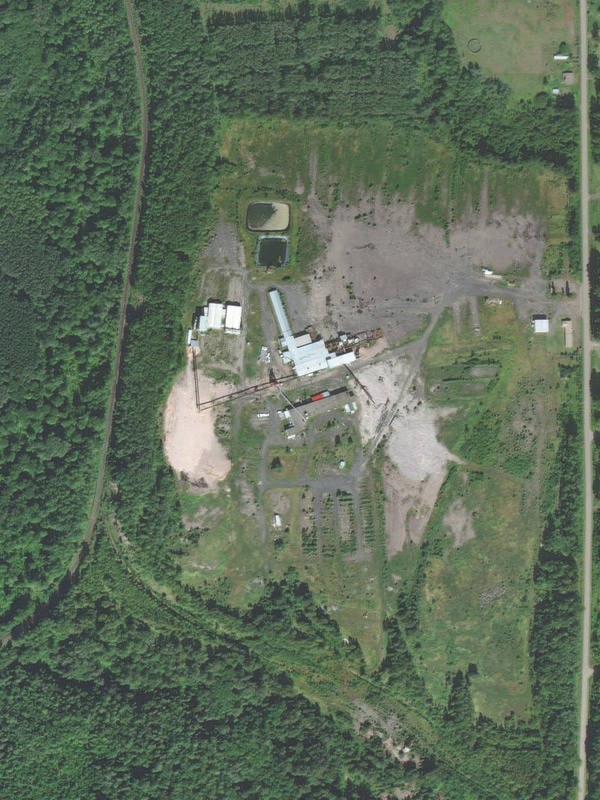A proposed pellet plant for South Hazelton may be on track to start production as early as the first quarter of 2021.
The project is a partnership between Hazelton Bioenergy, Gitxsan Development Corp. (GDC) and Airex Energy, a company that has developed a proprietary process for creating “torrefied” pellets.
These are said to be denser and drier than traditional pellets and therefore more efficient and environmentally friendly.
The location of the $50 million plant would be at Gitxsan Forest Inc. (GFI) Commercial Complex in South Hazelton.
“Our project would manufacture 100,000 pellets a year and create over 45 direct jobs on the site with an additional 44 indirect jobs reinvigorating the regional economy with long-term employer committed to providing local jobs,” said Rick Connors of GFI.
Andrew Jones, GDC business development manager, said they have not made a final investment decision yet, but expects that will happen by the end of 2019. If so, he said, they are ready to start construction in early 2020 and have the plant up and running in the first or second quarter of 2021.
In the meantime, they are seeking community input. Most recently, the partnership held two public engagement sessions, the first in Kitwanga and a second in Hazelton at the new Upper Skeena Recreation Centre. Jones said the company was pleased with the sessions.
“The one in Hazelton was really good, a lot of people, a lot of good questions, a lot of good conversation,” he said.
Not everyone feels that way. A group calling themselves Concerned Residents of South Hazelton and Area (CRSHA) was unimpressed. Linda Anderson, a member of the group, was unable to attend, but said many members did.
“They said it was sadly lacking in information, it was more boosterism,” she said. “There are a lot of unanswered questions.”
Jones said the partnership is aware of the opposition.
“There’s definitely a mix,” he said. “I’d be lying to you if I said everyone was super-on board, but when something new like this comes people don’t necessarily love change always and something new coming into their community, so there are some genuine concerns, which I respect, because people who are genuinely concerned have legitimate, really good questions,” he said.
“But there’s a lot of support too, a lot of people are really excited about the potential for industry considering the shutdown of sawmills in the area over the last number of years, so an opportunity for economic growth and jobs for the community, a lot of people were super, super excited about that too.”
CRSHA has a litany of concerns, may of which are outlined in a letter to the editor (“Proposed Pellet plant raises concerns,” The Interior News, this edition). Two of the more pressing ones are air quality and where the biomass will come from, the worry being the plant will rely on clear-cutting to get source material.
Jones said the partnership is working hard to address concerns, including a FAQ section on the website (hazeltonbioenergy.com), which features questions that are not pre-canned, but came directly from public engagement.
On air quality he said they have done their due diligence.
“There is a concern for it, but we don’t believe it’s going to be a problem,” he said. The plant uses something called cyclo-filter to collect dust and these systems are meeting the most stringent regulations in North America to eliminate dust emissions. The only visible smoke will be in the form of water vapour during cold temperatures.”
“Other than that, in regards to particulate matter … a dispersion model has been created according to ministry guidelines. And we’ll continually be monitoring offsite to make sure people are getting up-to-date and regular measures.”
Regarding where the source of the biomass will come from, Jones said they have agreements in place to use primarily wood waste.
“When it comes to whole log chipping, it will be a portion of operations, but the majority of fibre will come already chipped or in the form of sawdust from neighbouring sawmills,” he said.
“For smaller community operators who would like to provide fibre to the plant, the company would provide the necessary whole log chipping function.”
Torrefied pellets have been touted as a “clean and renewable, drop-in replacement for coal.” Pellet plants are also ostensibly greener because they use up materials that would have gone to waste or be burned off.
For Anderson, the issue is much broader than just the local impact in the South Hazelton area. She questions whether pellets really are an improvement.
“[Pellet plants are] scrambling for raw material now that Canfor’s shutdown and the only ones that are viable are the ones attached to a sawmill because of the cost of transporting the stuff,” she said. “If that’s green, all the emissions from transporting the stuff and etcetera, it doesn’t make a lot of sense
“Pellet plants are replacing sawmills … but it’s not changing the clearcutting policies etc., etc., so what’s green about that? It’s greener to leave the trees standing, right? So, it’s kind of ironic that this is being packaged and sold as green and a replacement for coal when it really isn’t.”
